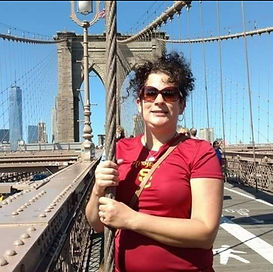GUEST COLUMN.
A ROUTE TO EXTREME WEATHER RESILIENCE
By Amanda Mullan, Project Director for Strategic Initiatives, National Academy of Public Administration

We often discuss extreme weather events before, during, and immediately after they happen. Recall the Hawaii wildfires from August 2023, Hurricane Helene from September 2024, and the more recent Southern California wildfires from January this year. We hear about the immediate devastation and loss; the number of people, the number of homes, the number of businesses, and the number of acres impacted.
But then the news cycle moves on, while local communities are left to deal with the aftermath: how to remove the disaster debris, how many homes can be rebuilt and when, what funding and resources are available, and what agencies will need to be involved with the intergovernmental system.
We know that the number of annual natural disasters causing more than $1 billion in economic damage has nearly doubled from 14 in 2014 to 27 in 2024. This means the number of communities impacted by extreme weather is increasing as well.
Our current system focuses more on responding to and recovering from disasters after they happen, rather than on making investments to improve resilience and adapt to risks before they happen. With the increase in the number and severity of disasters, research shows that pre-disaster investments can save up to $13 for every $1 invested. However, pre-disaster investments, such as upgrading drainage systems, building sea walls, and revitalizing green infrastructure, can be expensive, often exceeding what a single locality can afford, and covering a larger area than a single locality controls.
The United Nations Intergovernmental Panel on Climate Change identified governance and financing as two major challenges to implementing successful adaptation measures. While local governments are at the frontline of adaptation, and best positioned to know their communities' needs, the scale of needed investments often exceeds local jurisdictional boundaries. Regional decision making is fragmented, which adds to complexity and creates barriers to successful adaptation projects.
Effectively adapting to extreme weather requires new ways of governing and financing.
In an effort to help grapple with these issues, on Thursday, May 22, 2025, the National Academy of Public Administration’s (the Academy) charter for the Extreme Weather Resilience Hub was co-signed at the home of Academy Fellows Mark and Jane Pisano. Their inspiration, long-term planning, and funding have made it possible to establish this Hub at the Academy, providing us with a timely opportunity to start important climate-resilience and intergovernmental work that will be crucial to public administrators in the near future.
“Climate resilience will be the determining factor in the survival of communities coast to coast,” said Pisano, “Flooding, increasingly severe hurricanes, wildfires and more threaten people’s homes, schools and the infrastructure they’ve spent generations building. Creating a network of climate-resilient communities and resources is the most important step we can take to start building the future today.”
This initiative marks a significant milestone in the Academy’s efforts to transform public administration and address the growing impacts of extreme weather at the local level.
The Hub's Mission
The Extreme Weather Resilience Hub enables transformational government by focusing on three key areas: experts, assessment, and solutions.
We will draw in experts on foundational issues to address governance and financing structures that enable adaptation.
We will identify barriers to implementing successful adaptation projects on a regional or cross-jurisdictional scale; and
We will work with experts to identify or establish new governance structures and make recommendations to address these barriers.
As the work progresses the fundamental goal is to create new approaches to dealing with natural disasters, that can be used in communities throughout the United States.
The Pilot Project
The Hub's first project will be a pilot to test a new framework, leveraging the Fellows' knowledge and the Academy staff's expertise. We will identify an initial location to determine how the Academy will be involved, and capture lessons learned from other ongoing efforts.
The launch of the Extreme Weather Resilience Hub is a significant step forward in the Academy’s efforts to address the growing impacts of extreme weather. In a world in which uncertainty seems to be the order of the day, preparing for the unpredictable is of vital importance.
The contents of this Guest Column are those of the author, and not necessarily Barrett and Greene, Inc.
#StateandLocalEmergencyManagement #StateandLocalGovernmentManagement #StateandLocalGovernmentEmergencyManagementPerformance #StateandLocalPublicAdministration #ExtremeWeatherResilienceHub #NAPAExtremeWeatherResilienceHub #StateandLocalClimateResilience #LocalClimateResilience #LocalClimateChangeAdaptation #NationalAcademyPublicAdministration #NAPA #CityManagementExtremeWeather #CountyManagementExtremeWeather #IntergovernmentalPanelClimateChange #MarkAndJanePisano #LocalEmergencyManagementGovernanceChallenge #AmandaMullan #StateandLocalClimateChangeManagement #LocalAdaptationExtremeWeather #LocalEmergencyManagemnentFinanceChallenge #ImprovingDisasterResilience #LocalGovernmentWildfireResilience #LocalGovernmentFloodResilience #IntergovernmentalClimateResilienceNetwork #StateandLocalClimateResilience #BarrettandGreeneGuestColumn #BarrettandGreeneInc



































































































